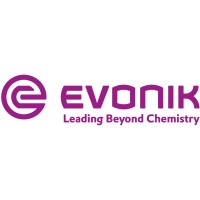-
A single integrated vacuum system
Failure to design the vacuum unit as an integrated system will invariably result in unsatisfactory yield and poor product quality (high vanadium, nickel, microcarbon, or asphaltenes), and ultimately, an unscheduled shutdown. To avoid these revamp problems the charge pump, fired heater, transfer line, column internals and ejector system must all be evaluated and designed as a unified whole so that critical variables – heater outlet temperature, coil steam injection rate, ...
-
Axens is a group providing a complete range of solutions for the conversion of oil and biomass to cleaner fuels, the production and purification of major petrochemical intermediates as well as all of natural gas' treatment and conversion options. The offer includes technologies, equipment, furnaces, modular units, catalysts, adsorbents and related services. Axens is ideally positioned to cover the entire value chain, from feasibility study to unit start-up and follow-up throughout ...
-
All about excellence in the energy and chemical industry
KBC exists to help you achieve and sustain excellent operational performance, through the actions of our people, fused with the application of our digitalization technology and best practices, powered by the Cloud.Better decisions - faster, Flawless execution - every time and Superior results - sustained. Deliver value: Performance assurance Organizations that perform at their best are able to adjust to changing dynamics without compromising competitiveness. KBC ...
-
For many refiners, heater coking in Crude and Vacuum Distillation Units (CDU/VDUs) is a common occurrence. Many units around the world are shut down every two years, every year, or even every six months to deal with chronic heater coking. However, with the right design features driven by a solid understanding of heater coking mechanisms, fired heater run length can be extended beyond five years, even with relatively challenging crudes. The two primary drivers of heater tube ...
-
Axens engineering services revamping
For a successful revamping project, no matter the degree of its complexity, and in accordance with your tight schedules, Axens is your unique contact during the phase preceding detailed engineering. Axens’ offer is based on our well founded expertise and several decades of experience. Our team of equipment specialists and our extensive network of detailed engineering contractors and equipment manufacturers complete this offer. Our approach consists of successive ...
-
Axens is an established name in hydrocracking licensing with more than 40 years’ experience in all types of hydrocracking processes. We have a large portfolio of hydroconversion processes, including fixed and ebullated-bed technologies. Our commercial units operate at low, medium and high conversion, and in once through, single-stage recycle and two-stage modes. Our commercial hydrocracker designs can cover a large variety of feedstocks varying from light HGO and LVGO ...
-
Axens is a group providing a complete range of solutions for the conversion of oil and biomass to cleaner fuels, the production and purification of major petrochemical intermediates as well as all of natural gas' treatment and conversion options. The offer includes technologies, equipment, furnaces, modular units, catalysts, adsorbents and related services. Axens is ideally positioned to cover the entire value chain, from feasibility study to unit start-up and follow-up ...
-
Operating personnel are uncomfortable with changes affecting operations such as: process upsets, catalyst regeneration and replacement, changes in feedstock, modified product specifications, evolution of production goals and new operating staff. In coping with these changes, your resources - manpower, know-how and experience, are often strained. Axens’ Tech Service Agreements (TSAs) are attractive as they allow you to expand your qualified resources at regular intervals ...
-
Be smart about FCC olefin recovery
Whether the driver is propylene as a chemicals feedstock or propylene and butylene as alky feed, FCC units worldwide are being pushed to maximize olefin production. Increased hydrotreating to meet Tier 3 gasoline requirements is reducing gasoline pool octane at a time of high premium-to-regular gasoline price differentials. Maximizing FCC olefi ns to produce high octane alkylate barrels is attractive – if they can be recovered in the FCC gas plant LPG stream. Higher reactor ...
-
New bypass line between diesel draw-off line to side stripper, new bypass valve, incl. update of P&ID, piping isometrics and pipe
-
A customer contacted Sulzer to increase capacity while improving the CO2 removal in the existing CO2 absorption column of their ethylene plant. This was the third revamp for this particular column and continued improvements can be hard to find. A proper caustic tower design requires a proper understanding of CO2 absorption with caustic. CO2 + 2NaOH Na2CO3 + H2O Sulzer replaced the conventional random packing with NeXRing and modified the operating parameters to match the ...
-
Ceramic coatings for fired heaters: Integrated Global Services (IGS) apply Cetek coatings across the globe. Numerous fired heater applications have been completed over 20 years. Process engineers typically see a 4-10% increase in fired heater efficiency, leading to millions in fuel savings and increased profits. Reduced harmful emissions help asset owners and operators meet current and emerging environmental legislations. Tube Scale - Barrier to Heat Transfer Increased fuel/energy ...
-
CO2 reduction in fried equipment
Fired heaters emit millions of tons of carbon dioxide (CO2) every year. Fired heaters usually have a fuel efficiency well below 100%, so any improvements that making them more efficient reduces CO2. Heaters are currently fuelled by carbon-bearing refinery fuel gas or natural gas, so further CO2 reduction is possible by changing to fuels with less carbon content. With the ever-changing regulatory climate, enacting an emissions reduction plan can provide a strategic advantage ...
-
Optimising the efficiency of shutdowns and turnarounds to improve processes
Tracerco’s diagnostic techniques provide you with the invaluable insights you need to reduce your turnaround times and costs by identifying operational process problems and mechanical integrity of internals in real-time and whilst online. Tracerco’s level, density, interface and multiphase nucleonic instrumentation provides invaluable insights to help you make informed decisions to increase profits, manage risks and reduce costs. Making data-driven decisions can significantly ...
-
Introduction to the Sinopec Closed Coke Handling System
The Sinopec Closed Coke Handling System (S-CCHS) is a safe and eco-friendly closed petroleum coke removal, conveying, and storage system with remote intelligent operation for pollution-free coke removal. This webinar will introduce the technology and its applications, with an emphasis on how it can be applied in your delayed coking unit operations. By attending, you will gain insights into: - Components and operation of the S-CCHS technology - How S-CCHS can eliminate ...
-
New digital tools to improve operational profitability in refineries
View this webinar to learn how you can leverage new digital tools as part of the Honeywell UOP upgraded PremierPLUS Performance Services offering to avoid unplanned downtime, optimize process performance, manage personnel changes, and reduce energy and emissions. The PremierPLUS Performance Services offering addresses these challenges and can improve operational profitability by an average of $1M to $5M per year. Attending this webinar will give you an overview of Honeywell ...
-
Excel® Technology: The Sustainable Solution for HydroProcessing Catalysts
Unveil the path to sustainable catalyst processes with Excel® Rejuvenation Technology! Join us as we delve into the art of catalyst rejuvenation, uncovering the means to propel your processes towards enhanced sustainability and waste reduction. Learn how to steer your operations away from wasteful practices and embrace sustainability using Evonik's Excel® Hydroprocessing Catalysts solutions. Our certified Life Cycle Assessment (LCA) lays bare the potential emissions you can ...
-
A new perspective on improving process and operational efficiencies
Presented with ageing equipment and ever-increasing environmental restrictions, process engineers are challenged with maximizing efficiency and mitigating problems. Without the necessary information, facing this challenge can be difficult or impossible. Tracerco provides you with the insights you need to help troubleshoot production problems and optimise processes. With the widest range of scanning and tracer diagnostic services on the market, Tracerco helps the refining and ...
-
Preparing for a petrochemical plant revamp or technology upgrade
Petrochemical producers have recently confronted unprecedented volatility in crude oil prices and limits on advantaged feedstock, while the refining and gas sectors remain vigilant to global supply conditions. However, some industry challenges remain unchanged, such as the need to optimize plant operations and cut carbon footprint by reducing the amount of energy required to drive a plant. Equipment nearing the end of its operational life can not only put plants at risk of ...
-
The case for plant modernization and upgrades
With a system that's outdated or showing signs of it, you are well aware of the risks of running your plant processes with aging hardware and software. Waiting to modernize will impact your cost of ownership due to shortages of critical parts and support, will increase risk of an unplanned production shutdown, and likely will have no incremental benefits. A well-designed modernization approach allows the opportunity to reduce system footprint and costs. Whether by eliminating ...



























